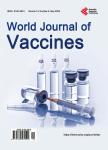Successes, Challenges and Lessons Learned in Accelerating Introduction of Rotavirus Immunisation in Zambia
Successes, Challenges and Lessons Learned in Accelerating Introduction of Rotavirus Immunisation in Zambia作者机构:Centre for Infectious Disease Research in Lusaka Lusaka Zambia University of North Carolina at Chapel Hill Chapel Hill USA University of Alabama at Birmingham Birmingham USA Ministry of Health Lusaka Zambia
出 版 物:《World Journal of Vaccines》 (疫苗(英文))
年 卷 期:2015年第5卷第1期
页 面:43-53页
学科分类:1002[医学-临床医学] 100214[医学-肿瘤学] 10[医学]
主 题:Zambia Rotavirus Vaccines Introduction Cold Chain
摘 要:Introduction: Under five mortality in Zambia is unacceptably high and diarrhoea is the third leading contributor. The Programme for Awareness and Elimination of Diarrhoea (PAED) sought to support the government to accelerate the introduction of new vaccines, including the pneumococcal, second dose measles and rotavirus vaccines in Zambia. Here we present our approach, progress and lessons learned in two years of the programme. Stakeholder Engagement: Definite commitment and buy-in and sign off by the MOH were fundamental prerequisites. National and international stakeholders including the Inter Agency Coordinating Committee (ICC), GAVI Alliance, WHO, University Teaching Hospital, Paediatrics Association of Zambia, and UNICEF were engaged for stakeholder buy-in and integration. Progress made: Following successful integration, PAED was officially launched in January 2012. Preparatory work done included: Introduction and acceptance of the PAED agenda in ICC, new vaccines proposal to GAVI, resource mobilisation, Effective Vaccine Management implementation, national cold chain scale-up strategy, vaccine orientation and adapted data collection tools, health worker training, step-wise vaccine introduction to Lusaka province districts and finally national roll-out of the rotavirus vaccine immunisation. Between January 2011 and November 2013, over 270,000 vaccine doses were distributed in Lusaka province. When 94,500 infants were fully immunised, adequate preparations had been made to facilitate national launch of rotavirus immunisations countrywide on 27th November 2013. Discussion: The PAED model was successful at resource mobilization;it has demonstrated how private sector can contribute to new vaccine introduction. Lessons learned from this model can be replicated in other countries with similar need and constraints.



